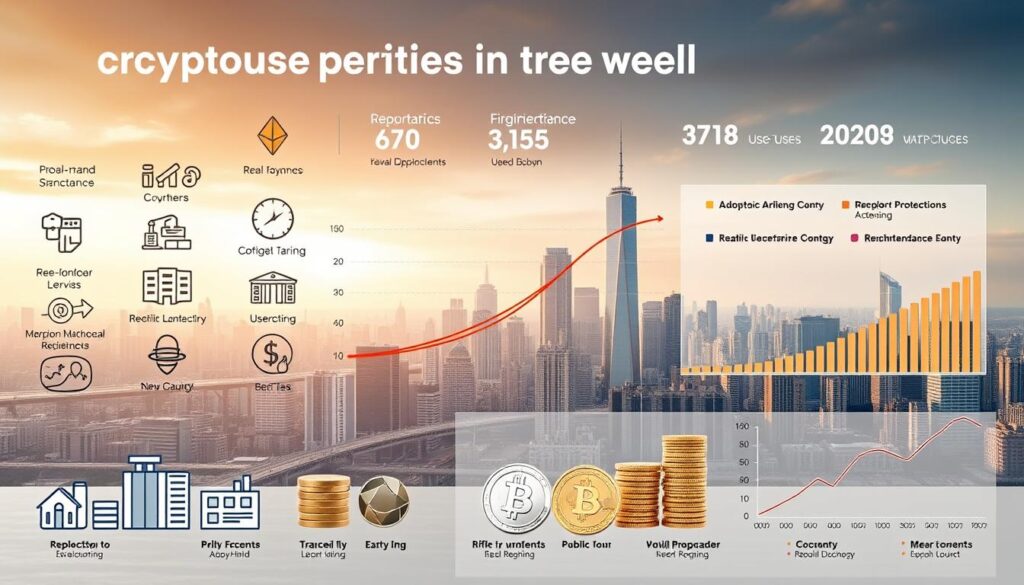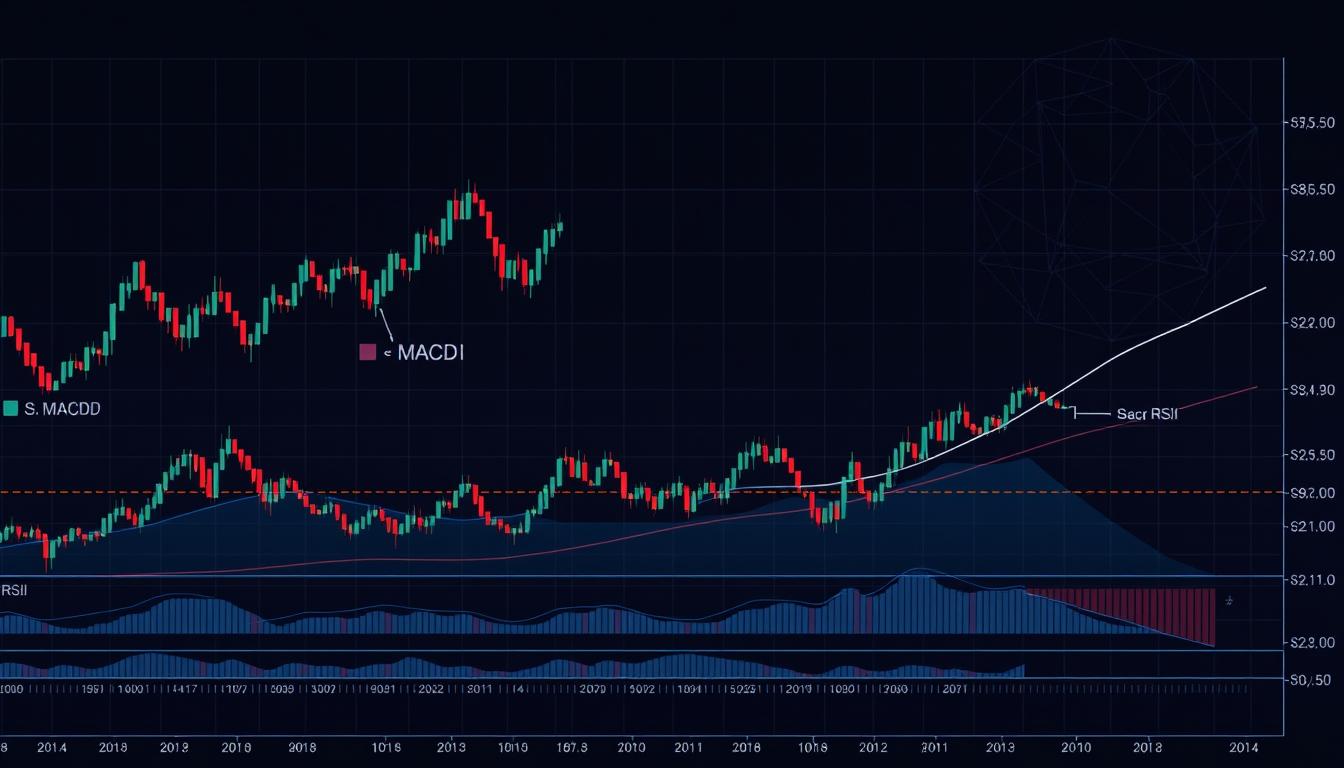Now Reading: Cryptocurrency Market Fundamental Analysis Framework Guide
- 01
Cryptocurrency Market Fundamental Analysis Framework Guide
Cryptocurrency Market Fundamental Analysis Framework Guide

Navigating the complex world of digital assets requires a robust crypto fundamental analysis strategy. Investors seeking to understand the intrinsic value of cryptocurrencies must develop a comprehensive approach to digital asset evaluation. The cryptocurrency market demands rigorous research and strategic assessment beyond surface-level market trends.
Successful crypto fundamental analysis goes far beyond price charts and speculative trading. It involves deep investigation into project fundamentals, technological infrastructure, team capabilities, and long-term potential. Investors need a systematic framework to dissect the complex ecosystem of digital currencies and make informed investment decisions.
Understanding the nuanced landscape of cryptocurrency requires more than intuition. A structured methodology helps investors uncover hidden value, assess potential risks, and identify promising digital assets with genuine market potential. This guide will walk through essential strategies for comprehensive digital asset evaluation.
Key Takeaways
- Fundamental analysis provides critical insights beyond market speculation
- Systematic evaluation helps mitigate investment risks in crypto markets
- Comprehensive research involves multiple layers of investigation
- Technology, team, and market potential are crucial assessment factors
- Structured frameworks enable more confident investment strategies
Understanding the Basics of Cryptocurrency Fundamental Analysis
Cryptocurrency fundamental analysis provides investors with a comprehensive approach to evaluating digital assets beyond simple price movements. This analytical method delves deep into the intrinsic value and potential of crypto projects by examining multiple critical factors.
Crypto analysis basics involve understanding the core elements that determine a digital asset’s true value. Investors explore various dimensions to make informed decisions in the volatile crypto marketplace.
Core Components of Fundamental Analysis
The fundamental vs technical analysis approach focuses on evaluating project-specific characteristics:
- Project team’s background and expertise
- Technological innovation and use case
- Market potential and adoption rate
- Economic model and token utility
Distinguishing Analysis Approaches
Fundamental and technical analysis represent two distinct investment strategies. While technical analysis examines price charts and trading patterns, fundamental analysis investigates the underlying value and potential of cryptocurrency projects.
| Fundamental Analysis | Technical Analysis |
|---|---|
| Examines project fundamentals | Studies price charts |
| Long-term investment perspective | Short-term trading focus |
| Evaluates intrinsic project value | Analyzes market sentiment |
Critical Importance in Crypto Investments
Fundamental analysis serves as a crucial risk management tool in cryptocurrency investments. By conducting thorough research, investors can identify promising projects with strong technological foundations and potential for sustainable growth.
Understanding crypto analysis basics enables investors to navigate the complex digital asset landscape with greater confidence and strategic insight.
Essential Tools for Crypto Market Analysis
Navigating the complex world of cryptocurrency requires sophisticated crypto analysis tools and market research platforms. Investors and analysts need powerful resources to make informed decisions in this dynamic digital landscape.
Effective market research platforms provide comprehensive insights into cryptocurrency performance, helping traders understand market trends and potential investment opportunities. These tools break down complex data into actionable intelligence.
- CoinMarketCap: A premier platform for real-time cryptocurrency pricing and market capitalization tracking
- TradingView: Advanced charting tools for technical and fundamental analysis
- Glassnode: Blockchain data analytics platform with deep network insights
- CryptoCompare: Comprehensive market data aggregation and research tool
Blockchain explorers like Etherscan and BTC.com offer detailed transaction histories and network metrics. These crypto analysis tools enable investors to examine wallet activities, transaction volumes, and network health.
Social sentiment analysis platforms such as TheSentiment and LunarCrush provide valuable insights into market psychology. By tracking social media discussions and community engagement, traders can gauge potential market movements.
Selecting the right combination of market research platforms can dramatically improve cryptocurrency investment strategies. Investors should focus on tools that offer real-time data, comprehensive analytics, and user-friendly interfaces.
Evaluating Project Team and Leadership
Crypto team evaluation is a critical component of comprehensive cryptocurrency investment research. The success of a blockchain project heavily depends on the quality, expertise, and track record of its leadership team. Investors must conduct thorough leadership assessment to minimize risks and identify potential breakthrough projects.
Effective crypto team evaluation requires a multifaceted approach that goes beyond surface-level credentials. Investors should dig deep into team members’ professional backgrounds, technical expertise, and previous accomplishments in the blockchain ecosystem.
Background Check Strategies
- Verify LinkedIn professional profiles
- Cross-reference academic and professional credentials
- Research previous startup experiences
- Check for blockchain-specific achievements
Experience and Expertise Assessment
A strong cryptocurrency team typically demonstrates expertise across multiple domains. Key indicators of a robust leadership team include:
- Technical blockchain development experience
- Previous successful project launches
- Strong network within the cryptocurrency ecosystem
- Relevant industry certifications
| Evaluation Criteria | High-Quality Indicator | Red Flag |
|---|---|---|
| Technical Background | Computer Science/Engineering degrees | Limited technical understanding |
| Blockchain Experience | Multiple successful crypto projects | No prior blockchain work |
| Industry Connections | Speaking at major conferences | Minimal professional network |
Past Project Performance Evaluation
Investors should scrutinize team members’ historical project performance. Past success can be a strong predictor of future potential. Look for demonstrated ability to deliver complex blockchain solutions, manage development cycles, and navigate challenging market conditions.
By implementing rigorous crypto team evaluation techniques, investors can significantly improve their chances of identifying promising cryptocurrency projects with strong leadership foundations.
Market Capitalization and Token Economics

Understanding crypto market cap and token economics analysis is crucial for investors navigating the complex cryptocurrency landscape. Market capitalization represents the total value of a cryptocurrency, calculated by multiplying the current price by the total number of coins in circulation.
Key components of crypto market cap include:
- Total circulating supply
- Current market price
- Trading volume
- Market valuation
Token economics analysis goes beyond simple market valuation. It examines the fundamental mechanisms that drive a cryptocurrency’s economic model, including:
- Token distribution strategy
- Inflation and supply mechanisms
- Utility within the ecosystem
- Incentive structures
Investors can gain deeper insights by analyzing these critical metrics:
| Metric | Importance | Evaluation Criteria |
|---|---|---|
| Circulating Supply | Indicates available tokens | Lower supply can suggest potential value appreciation |
| Token Utility | Determines practical application | Strong use cases within blockchain ecosystem |
| Distribution Model | Reveals project transparency | Fair and decentralized allocation |
By carefully examining crypto market cap and conducting thorough token economics analysis, investors can make more informed decisions in the dynamic cryptocurrency market.
Analyzing Whitepaper and Technical Documentation
Crypto whitepaper analysis is a critical skill for investors and researchers seeking to understand the fundamental potential of blockchain projects. A comprehensive technical documentation review can reveal crucial insights into a cryptocurrency’s viability and innovation.
Investors must approach crypto whitepaper analysis with a strategic mindset. The documentation serves as a project’s technical blueprint, offering deep insights into its technological framework and future potential.
Key Elements to Examine
- Problem statement and proposed solution
- Technical architecture design
- Consensus mechanism details
- Token economic model
- Development roadmap
Red Flags in Whitepapers
When conducting technical documentation review, watch for warning signs that might indicate potential project weaknesses:
- Vague technical descriptions
- Unrealistic promised capabilities
- Lack of clear implementation strategy
- Incomplete team background information
Technical Feasibility Assessment
Evaluating a project’s technical feasibility requires deep analysis of its underlying technology. Investors should scrutinize the project’s technological innovation, scalability potential, and practical implementation strategies.
| Assessment Criteria | Evaluation Points |
|---|---|
| Technical Innovation | Unique technological approach |
| Scalability | Network capacity and growth potential |
| Security Architecture | Robust protection mechanisms |
| Consensus Mechanism | Efficiency and decentralization |
Rigorous crypto whitepaper analysis empowers investors to make informed decisions by understanding the technical foundations of blockchain projects.
Understanding Network Effects and User Adoption

Cryptocurrency success hinges on powerful network effects and strategic user adoption metrics. As more individuals join a crypto ecosystem, its value and utility exponentially increase. This phenomenon transforms digital currencies from simple financial instruments into robust, interconnected networks.
Analyzing crypto network effects requires understanding key user adoption metrics that demonstrate a project’s growth potential. Investors and researchers track several critical indicators:
- Active wallet addresses
- Transaction volume
- Daily active users
- Transaction frequency
- Total value locked (TVL)
The following metric analysis provides insights into crypto network effects:
| Metric | Significance | Growth Potential |
|---|---|---|
| Active Addresses | User Engagement | High |
| Transaction Volume | Network Utility | Medium-High |
| Daily Active Users | User Retention | High |
Successful cryptocurrencies leverage network effects by creating compelling ecosystem incentives. As user adoption increases, the network becomes more valuable, attracting additional participants and creating a self-reinforcing cycle of growth.
Investors should pay close attention to user adoption metrics as they represent the underlying strength and potential scalability of a cryptocurrency project. These metrics offer critical insights beyond traditional financial indicators.
Cryptocurrency Market Fundamental Analysis Framework
Developing a robust crypto analysis framework requires a strategic approach to understanding the complex cryptocurrency market. Investors need a comprehensive fundamental analysis strategy that goes beyond surface-level information. The framework serves as a critical roadmap for making informed investment decisions in the volatile digital asset landscape.
Crafting an effective fundamental analysis strategy involves multiple interconnected components that work together to provide a holistic view of potential investments.
Key Framework Components
- Market capitalization assessment
- Technological infrastructure evaluation
- Team and leadership analysis
- Economic ecosystem examination
- Regulatory landscape assessment
Implementation Strategy
The implementation of a crypto analysis framework requires systematic approach and disciplined execution. Investors should:
- Establish clear evaluation criteria
- Collect comprehensive data points
- Develop quantitative scoring mechanisms
- Create consistent review processes
- Maintain flexibility for market changes
Performance Metrics
Measuring the effectiveness of your fundamental analysis strategy involves tracking specific performance indicators. Key metrics include return on investment, risk-adjusted performance, and comparative market benchmarking. These indicators help investors refine their approach and optimize decision-making processes.
Regulatory Environment and Compliance Analysis

Navigating the complex world of crypto regulations requires a strategic approach to compliance assessment. Digital assets have transformed financial markets, creating unprecedented challenges for regulatory bodies worldwide. Investors must understand how regulatory frameworks impact cryptocurrency valuations and long-term potential.
The regulatory landscape for cryptocurrencies varies significantly across different jurisdictions. In the United States, multiple agencies oversee digital asset compliance, including:
- Securities and Exchange Commission (SEC)
- Commodity Futures Trading Commission (CFTC)
- Financial Crimes Enforcement Network (FinCEN)
Comprehensive crypto regulations play a critical role in determining a project’s legitimacy and investment potential. The Howey Test remains a pivotal framework for evaluating whether digital assets qualify as securities, examining key factors such as investment expectations and profit potential.
Successful compliance assessment involves analyzing a cryptocurrency project’s:
- Regulatory preparedness
- Legal jurisdiction adaptability
- Transparency in financial operations
- Risk management strategies
Emerging markets like the European Union have recently implemented comprehensive digital asset regulations, signaling a global trend towards structured oversight. Investors should prioritize projects demonstrating proactive compliance and robust regulatory engagement.
Community Engagement and Social Metrics
Cryptocurrency projects live or die by their community strength. Understanding social engagement metrics provides crucial insights into a project’s potential and market perception. Crypto community analysis goes beyond simple follower counts, delving into meaningful interactions and growth indicators.
Effective crypto community analysis requires a multifaceted approach to evaluating digital ecosystems. Investors and researchers must examine various dimensions of social engagement to gauge a project’s health and potential.
Social Media Analysis Strategies
Successful social engagement metrics involve tracking multiple platforms and analyzing engagement quality. Key indicators include:
- Follower growth rate
- Average post interactions
- Sentiment analysis
- Content quality and relevance
- Community response times
Developer Activity Tracking
Technical communities represent a critical component of cryptocurrency projects. Tracking developer engagement provides deeper insights into project momentum and innovation potential.
- GitHub repository commits
- Code contribution frequency
- Open-source collaboration
- Technical documentation updates
Community Growth Indicators
Measuring community expansion involves quantitative and qualitative assessments. Robust crypto community analysis examines both numerical growth and interaction quality across digital platforms.
- Forum participation rates
- Discord/Telegram member engagement
- Community-driven initiatives
- Global geographic diversity
Sophisticated investors leverage these social engagement metrics to understand a cryptocurrency project’s long-term viability and potential for sustained growth.
Competitive Analysis in the Crypto Space
Navigating the complex landscape of cryptocurrency requires a strategic approach to crypto competitive analysis. Investors and researchers must develop robust methodologies to evaluate market positioning and understand the competitive dynamics within digital asset ecosystems.
Effective competitive analysis in the crypto market involves several critical steps:
- Identify direct and indirect competitors in the specific blockchain niche
- Assess unique technological capabilities
- Evaluate market share and growth potential
- Analyze historical performance and project trajectories
When conducting crypto competitive analysis, investors should focus on key differentiators. Market positioning becomes crucial in understanding a project’s potential for long-term success. Critical evaluation points include:
- Technological innovation
- Development team expertise
- Community engagement
- Partnerships and ecosystem integrations
Advanced researchers utilize comprehensive comparison frameworks that examine multiple dimensions of cryptocurrency projects. This approach helps identify potential breakthrough technologies and emerging market leaders.
The most successful crypto competitive analysis strategies combine quantitative metrics with qualitative assessments, providing a holistic view of a project’s competitive landscape and future potential.
Technology Stack and Development Progress
Crypto tech stack analysis plays a critical role in understanding the potential and sustainability of blockchain projects. Developers and investors must dig deep into the technological foundations that power cryptocurrency initiatives to assess their long-term viability.
The technological infrastructure of a cryptocurrency project reveals its true potential for innovation and market survival. By examining the development progress tracking methods, investors can gain valuable insights into a project’s technical health and future trajectory.
GitHub Activity Analysis
GitHub serves as a crucial platform for evaluating a cryptocurrency project’s technical momentum. Key metrics to examine include:
- Number of active contributors
- Frequency of code commits
- Complexity of recent updates
- Community engagement in development
Code Quality Assessment
Robust code quality indicates the project’s technical sophistication. Investors should scrutinize:
- Code documentation quality
- Test coverage percentage
- Security vulnerability assessments
- Adherence to best programming practices
Update Frequency Monitoring
Consistent development signals project vitality. A comprehensive analysis involves tracking:
| Metric | Significance | Evaluation Criteria |
|---|---|---|
| Release Frequency | Project Activity Level | Monthly/Quarterly Updates |
| Feature Implementations | Technical Innovation | Roadmap Alignment |
| Bug Fixes | Technical Stability | Rapid Response Time |
By conducting thorough crypto tech stack analysis, investors can make informed decisions about a project’s technical potential and development progress tracking capabilities.
Real-World Use Cases and Adoption Metrics

Cryptocurrency use cases extend far beyond simple trading and investment. The practical applications of blockchain technology are revolutionizing multiple industries, demonstrating the true potential of digital assets in solving real-world challenges.
Several key sectors are experiencing significant crypto use cases and adoption measurement transformations:
- Financial Services: Blockchain enables faster cross-border transactions and reduces intermediary costs
- Supply Chain Management: Transparent tracking of goods and verifying product authenticity
- Healthcare: Secure patient data management and transparent medical record sharing
- Gaming: Tokenized in-game economies and digital asset ownership
Understanding adoption metrics provides critical insights into a cryptocurrency’s potential success. Investors and analysts typically examine:
- Transaction volume
- Active user growth
- Network participation rates
- Integration with existing platforms
Successful cryptocurrencies demonstrate clear utility beyond speculation. They solve tangible problems, create economic efficiencies, and offer innovative solutions across diverse industries.
Investment Risk Assessment Strategies
Navigating the cryptocurrency market requires sophisticated crypto risk analysis techniques to protect your investments. The volatile nature of digital assets demands a comprehensive approach to investment risk mitigation that goes beyond traditional financial strategies.
Successful investors develop a multi-layered risk assessment framework that encompasses several critical components:
- Quantitative risk evaluation
- Technical risk assessment
- Market sentiment analysis
- Regulatory landscape monitoring
Understanding the unique challenges of cryptocurrency investments begins with recognizing the multifaceted risks inherent in digital asset markets. Strategic investment approaches can help minimize potential losses while maximizing potential returns.
| Risk Category | Mitigation Strategy | Impact Level |
|---|---|---|
| Market Volatility | Diversification | High |
| Regulatory Changes | Continuous Monitoring | Medium |
| Technical Vulnerabilities | Security Audits | Critical |
| Liquidity Risks | Portfolio Rebalancing | High |
Developing a robust crypto risk analysis strategy requires investors to implement proactive risk management techniques. This includes setting clear investment parameters, conducting thorough research, and maintaining a flexible approach to portfolio management.
Key risk mitigation techniques involve:
- Establishing strict investment limits
- Implementing stop-loss strategies
- Regularly reviewing portfolio performance
- Staying informed about market trends
The cryptocurrency market demands a dynamic approach to investment risk mitigation. Successful investors continuously adapt their strategies, leveraging advanced analytical tools and maintaining a comprehensive understanding of market dynamics.
Market Sentiment Analysis Techniques
Crypto sentiment analysis has become a critical tool for investors navigating the volatile cryptocurrency landscape. Understanding market mood indicators provides crucial insights into potential price movements and investor psychology.
Investors can leverage multiple techniques to gauge market sentiment effectively. The most powerful approaches combine quantitative and qualitative research methods to create a comprehensive view of market dynamics.
Social Listening Tools
Advanced social listening platforms help track real-time crypto sentiment across digital platforms. These tools analyze:
- Social media mentions
- Online forum discussions
- Twitter sentiment trends
- Reddit community conversations
News Impact Analysis
News events dramatically influence cryptocurrency markets. Tracking news sentiment involves analyzing:
- Regulatory announcements
- Major exchange listings
- Technological breakthrough reports
- Influential investor statements
Sentiment Indicators
Key market mood indicators provide nuanced insights into investor emotions and potential market directions.
| Sentiment Indicator | Description | Impact Level |
|---|---|---|
| Fear & Greed Index | Measures market emotional state | High |
| Social Media Volume | Tracks conversation intensity | Medium |
| Trading Volume Trends | Indicates market participation | High |
By integrating these crypto sentiment analysis techniques, investors can develop a more sophisticated understanding of market dynamics and potential investment opportunities.
Long-term Value Proposition Assessment
Evaluating the long-term potential evaluation of a cryptocurrency requires a comprehensive approach that goes beyond short-term market fluctuations. Investors must dig deep into the core value proposition of each crypto project to understand its sustainable growth potential. This means analyzing not just current performance, but the underlying technology, market positioning, and real-world utility that could drive future adoption.
The crypto value proposition becomes clearer when examining a project’s unique problem-solving capabilities. Bitcoin’s decentralized financial model or Ethereum’s smart contract platform demonstrate how breakthrough technologies can create lasting market impact. Successful cryptocurrencies solve genuine economic challenges and provide innovative solutions that traditional financial systems cannot easily replicate.
Robust long-term potential evaluation involves scrutinizing multiple critical dimensions. These include the development team’s track record, technological innovation, scalability, community engagement, and potential for widespread adoption. Investors should look for projects with clear roadmaps, consistent technical progress, and strong ecosystem support that indicate sustainable growth potential beyond speculative trading.
Ultimately, identifying cryptocurrencies with genuine long-term value requires a nuanced, multifaceted analysis. By combining technological assessment, market dynamics, and real-world utility, investors can make more informed decisions about which crypto projects have the potential to deliver meaningful returns and create transformative economic solutions.
FAQ
What is cryptocurrency fundamental analysis?
Cryptocurrency fundamental analysis is a comprehensive evaluation method that examines the intrinsic value of a digital asset by analyzing various factors including project team, technology, market potential, token economics, regulatory environment, and real-world use cases.
How is fundamental analysis different from technical analysis?
While technical analysis focuses on price charts and trading patterns, fundamental analysis delves into the underlying factors that could potentially drive a cryptocurrency’s long-term value, such as project technology, team capabilities, market adoption, and overall ecosystem potential.
What are the key components of cryptocurrency fundamental analysis?
The key components include team evaluation, whitepaper analysis, technology assessment, token economics, network effects, community engagement, regulatory compliance, development progress, competitive landscape, and real-world use cases.
Why is team experience important in cryptocurrency projects?
Team experience is crucial because it demonstrates the project’s potential for successful execution. Experienced blockchain developers, industry veterans, and leaders with proven track records can significantly increase the likelihood of a project’s success and long-term viability.
How do I assess a cryptocurrency’s token economics?
Assess token economics by examining total supply, distribution mechanism, inflation rate, token utility, staking opportunities, and how tokens are used within the project’s ecosystem. Look for transparent and sustainable tokenomics that provide clear value proposition.
What tools can help in cryptocurrency fundamental analysis?
Useful tools include blockchain explorers, market data aggregators like CoinMarketCap, social sentiment analysis platforms, GitHub activity trackers, crypto news aggregators, and financial research platforms that provide comprehensive project insights.
How important is community engagement in cryptocurrency projects?
Community engagement is critical as it indicates project health, potential adoption, and long-term sustainability. Active developer communities, responsive social media presence, and growing user base are strong positive indicators for a cryptocurrency project.
What red flags should I watch for in cryptocurrency whitepapers?
Red flags include vague technical descriptions, unrealistic promises, lack of clear problem-solution framework, undefined roadmap, absence of technical details, plagiarized content, and no clear explanation of the project’s unique value proposition.
How do regulatory environments impact cryptocurrency investments?
Regulatory environments can significantly impact cryptocurrency value and adoption. Favorable regulations can encourage investment and mainstream acceptance, while restrictive policies can limit a project’s growth potential and create legal challenges.
What metrics indicate a cryptocurrency’s potential for adoption?
Key adoption metrics include active wallet addresses, transaction volume, daily active users, developer activity on GitHub, integration with existing platforms, real-world use cases, partnership announcements, and overall network growth rate.















